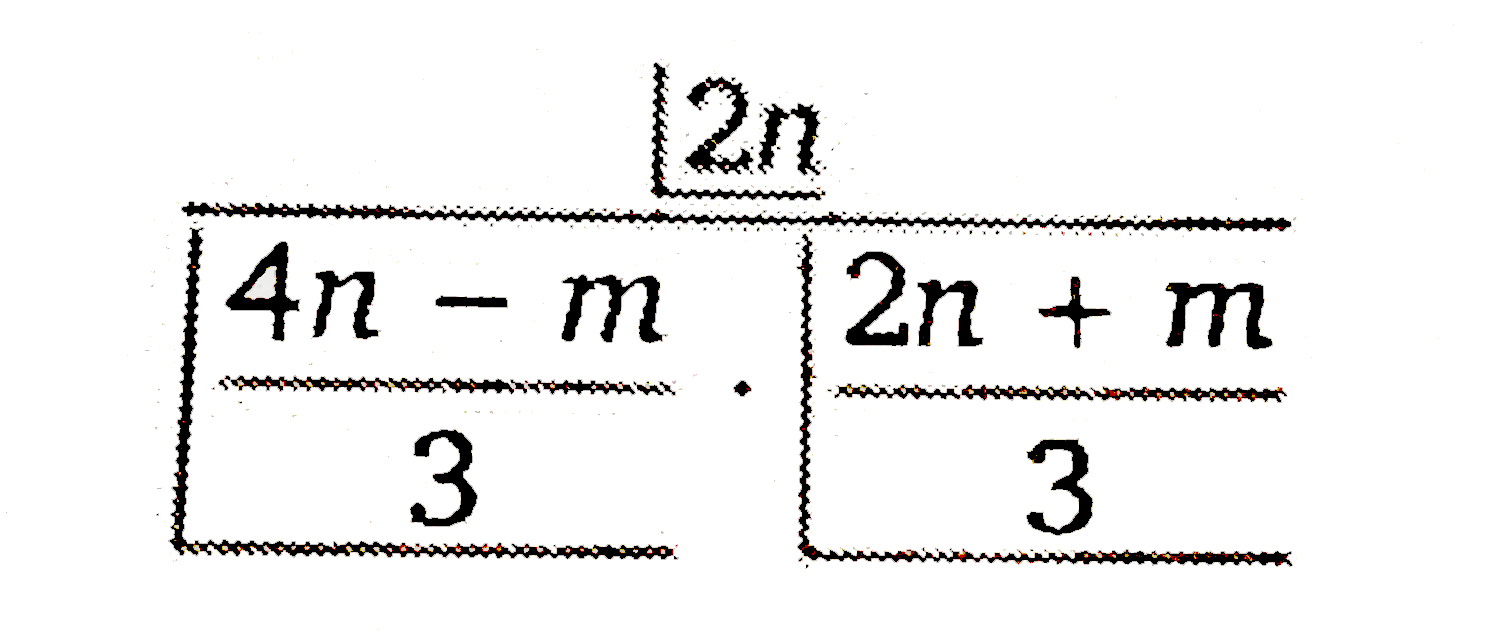If m and n are positive integers, then prove that the coefficients of xm and xn are equal in the expansion of (1+x)m+n
The correct Answer is:N/a
To prove that the coefficients of xm and xn in the expansion of (1+x)m+n are equal, we will use the binomial theorem.
1. Recall the Binomial Theorem:
The binomial theorem states that for any positive integer k:
(a+b)k=k∑r=0(kr)ak−rbr
For our case, we set a=1 and b=x, and k=m+n:
(1+x)m+n=m+n∑r=0(m+nr)xr
2. Identify the Coefficients:
The coefficient of xm in the expansion is given by the term where r=m:
Coefficient of xm=(m+nm)
Similarly, the coefficient of xn is given by the term where r=n:
Coefficient of xn=(m+nn)
3. Use the Property of Binomial Coefficients:
We know from the properties of binomial coefficients that:
(m+nm)=(m+nn)
This is because choosing m items from m+n is equivalent to leaving out n items, which is the same as choosing n items from m+n.
4. Conclusion:
Since both coefficients are equal:
Coefficient of xm=Coefficient of xn
Thus, we have proved that the coefficients of xm and xn in the expansion of (1+x)m+n are equal.
The binomial theorem states that for any positive integer k:
(a+b)k=k∑r=0(kr)ak−rbr
For our case, we set a=1 and b=x, and k=m+n:
(1+x)m+n=m+n∑r=0(m+nr)xr
The coefficient of xm in the expansion is given by the term where r=m:
Coefficient of xm=(m+nm)
Similarly, the coefficient of xn is given by the term where r=n:
Coefficient of xn=(m+nn)
We know from the properties of binomial coefficients that:
(m+nm)=(m+nn)
This is because choosing m items from m+n is equivalent to leaving out n items, which is the same as choosing n items from m+n.
Since both coefficients are equal:
Coefficient of xm=Coefficient of xn
Thus, we have proved that the coefficients of xm and xn in the expansion of (1+x)m+n are equal.
Topper's Solved these Questions
- BINOMIAL THEOREMBOOK - NAGEEN PRAKASHAN ENGLISHCHAPTER - BINOMIAL THEOREMEXERCISE - Exercise 8A
22 Videos
- BINOMIAL THEOREMBOOK - NAGEEN PRAKASHAN ENGLISHCHAPTER - BINOMIAL THEOREMEXERCISE - Exercise 8B
38 Videos
- COMPLEX NUMBERS AND QUADRATIC EQUATION BOOK - NAGEEN PRAKASHAN ENGLISHCHAPTER - COMPLEX NUMBERS AND QUADRATIC EQUATION EXERCISE - MISCELLANEOUS EXERCISE
20 Videos
Similar Questions
If pandq are positive, then prove that the coefficients of xpandxq in the expansion of (1+x)p+q will be equal.
View SolutionIf 'n' is a positive integer then prove that the coefficient foxm in the expansion of (x2+1x)2n is :

View SolutionIf 'n' is a positive integer then prove that the coefficient foxm in the expansion of (x2+1x)2n is :

View SolutionIf a and b are respective coefficients of xm and xn in the expansion of (1+x)m+n then
View SolutionIn the binomial expansion of (1+x)m+n, prove that the coefficients of xmandxn are equal.
View SolutionIf n is an odd positive integer, prove that the coefficients of the middle terms in the expansion of (x+y)n are equal.
View SolutionIn the expansion of (1+a)m+n ,prove that coefficients of am and an are equal.
View SolutionIf for positive integers r>1,n>2, the coefficients of the (3r)th and (r+2)th powers of x in the expansion of (1+x)2n are equal, then prove that n=2r+1.
View SolutionGiven positive integers r>1,n>2,n being even and the coefficient of (3r)th term and (r+2)th term in the expansion of (1+x)2n are equal; find r
View SolutionCoefficient of xn in the expansion of (1+x)n1−x
View Solution